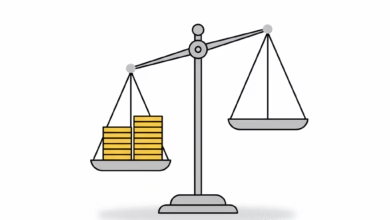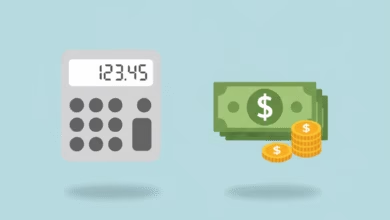What is the VIX (fear index) and why does it matter?
Understand what the VIX is and how it impacts your pocket

In the world of investing, there’s a constant battle between two powerful emotions: greed and fear. Greed drives markets to new heights, but fear is the force that can bring it all crashing down. For decades, investors and analysts wished for a way to measure that fear—to take the market’s temperature and gauge the level of anxiety in the air.
In 1993, that tool was born. It’s called the Cboe Volatility Index, but it’s known throughout the financial world by its ticker symbol: VIX. More famously, it carries a much more evocative nickname: the “Fear Index.”
When the VIX spikes, it dominates financial news headlines and signals that turbulence is rocking Wall Street. But what is this mysterious index? How is it calculated, and why is it one of the most closely watched indicators for professional traders and everyday investors alike? This guide will demystify the VIX, breaking down how it works, how to interpret it, and why understanding the “Fear Index” can make you a smarter, more resilient investor.
What Is the VIX? The Stock Market’s ‘Fear Index’ Explained

At its core, the VIX is a real-time index that represents the market’s expectation of volatility over the next 30 days. It’s a forward-looking measure designed to quantify investor fear and uncertainty.
Think of it like this:
- The S&P 500 Index tells you what the market is doing right now.
- The VIX tells you what the market thinks is going to happen over the next month.
Unlike other indexes that track the price of stocks (like the Dow Jones or S&P 500), the VIX doesn’t track price at all. Instead, it tracks the price of something more abstract: options. Specifically, it tracks the prices of a wide range of put and call options on the S&P 500 index.
Without getting too technical, an option is a financial contract that gives the buyer the right, but not the obligation, to buy or sell an asset at a predetermined price on a future date. Investors use options for many reasons, but a primary one is to hedge against losses or speculate on future price movements. The more uncertain or fearful investors are about the future, the more they are willing to pay for these options contracts, especially “put” options, which are essentially a form of portfolio insurance.
The VIX uses a complex mathematical formula to take the prices of all these S&P 500 options and distill them into a single number. This number represents the market’s consensus on the expected range of movement for the S&P 500 over the next 30 days.
How to Read the VIX: Decoding the Numbers of Fear
The VIX is quoted as a percentage point. For example, if the VIX is at 20, it suggests that the market expects the S&P 500 to move within a 20% annualized range over the next 30 days. But for a practical understanding, it’s easier to think of the VIX in terms of general zones of sentiment:
- VIX Below 20 (The “Complacency Zone”): When the VIX is in this range, it generally signals a period of low volatility, stability, and investor confidence. The market environment is seen as calm and predictable. However, very low levels (e.g., below 12) can sometimes indicate extreme complacency, which can be a warning sign that investors are underestimating risks.
- VIX Between 20 and 30 (The “Zone of Uncertainty”): This range indicates a heightened level of uncertainty and anxiety in the market. There might be some economic or geopolitical concerns on the horizon, and investors are starting to get nervous. Volatility is expected to pick up.
- VIX Above 30 (The “Fear and Panic Zone”): A VIX reading above 30 signifies a high level of fear and significant market turmoil. This is the territory of major sell-offs and market corrections. When the VIX spikes above 40, it’s typically a sign of outright panic. To put it in historical context:
- During the 2008 Global Financial Crisis, the VIX soared to an all-time intraday high above 89.
- At the peak of the COVID-19 pandemic panic in March 2020, the VIX closed above 82.
The Inverse Relationship: Why the VIX and S&P 500 Are a See-Saw

One of the most important characteristics of the VIX is its strong inverse correlation with the S&P 500. This means that when the S&P 500 goes up, the VIX generally goes down, and vice versa. This relationship is not a coincidence; it’s a direct reflection of market psychology.
Here’s why it works this way:
- When the S&P 500 falls sharply, investor fear skyrockets. Worried about further losses, investors rush to buy “insurance” in the form of S&P 500 put options to protect their portfolios. This surge in demand for options drives their prices up, which in turn causes the VIX to spike.
- When the S&P 500 is rising steadily, fear subsides and confidence grows. There is less demand for downside protection, so the price of options falls. This causes the VIX to decline, reflecting the calm and complacent market environment.
This see-saw relationship is why a sudden, sharp jump in the VIX is such a powerful warning signal that trouble is brewing in the stock market.
Why the VIX Is a Critical Tool for Every Investor
You don’t need to be a complex options trader to benefit from understanding the VIX. For the average long-term investor, it serves as an invaluable sentiment gauge and a tool for managing your own emotions.
1. It Serves as a Contrarian Indicator
There is a famous adage on Wall Street: “When the VIX is high, it’s time to buy. When the VIX is low, it’s time to go.” While not a perfect rule, it’s rooted in the wisdom of contrarian investing.
The VIX tends to spike at moments of maximum pessimism—precisely when panicked investors are selling indiscriminately and prices are at their most attractive for long-term buyers. Legendary investor Warren Buffett famously advised investors to be “fearful when others are greedy and greedy when others are fearful.” A soaring VIX is the clearest possible sign that fear has taken hold of the market. For a disciplined, long-term investor with cash on the sidelines, a very high VIX can signal a potential buying opportunity.
2. It Helps You Contextualize Market Volatility
It’s easy to get scared when your portfolio drops during a market sell-off. By looking at the VIX, you can gain a broader perspective. Seeing that the VIX is at 40 helps you understand that this is not a normal downturn; it’s a period of extreme, market-wide fear. This can help you depersonalize the event and recognize it as a broader market cycle rather than a reflection of your specific investment choices, making it easier to stick to your long-term plan instead of panic selling.
3. It’s a Hedging Tool for Professionals
For sophisticated investors and institutions, the VIX is more than just an indicator; it’s a tradable asset. They can buy VIX futures and options to directly hedge their portfolios against a market crash. If they own a large portfolio of stocks, they can buy VIX call options. If the market crashes and their stocks fall, the VIX will spike, and their VIX options will become highly profitable, offsetting some of the losses in their stock portfolio.
The Limitations of the VIX: What the Fear Index Can’t Tell You
While powerful, the VIX is not a crystal ball. It’s crucial to understand what it doesn’t do.
- It Does Not Predict Market Direction: A high VIX tells you that the market expects big moves, but it does not tell you if that move will be up or down. While it’s usually associated with downside fear, a VIX can remain elevated even during a sharp market rebound. It simply signals a wide range of potential outcomes.
- It Is a Short-Term Indicator: The VIX is calculated using options that expire in about 30 days. It is a snapshot of expected short-term volatility, not a long-term economic forecast.
- A Low VIX Does Not Mean “No Risk”: A prolonged period of a low VIX can lead to dangerous levels of complacency. Investors can be lulled into a false sense of security, taking on excessive risk just before a sudden and unexpected market shock.
Using the VIX to Become a Smarter Investor

For the average person investing in their 401(k) or IRA, the key takeaway is not to trade the VIX directly. VIX-related financial products are complex and designed for professional traders.
Instead, you should use the VIX as a financial weather report. It tells you about the emotional climate on Wall Street. When the news reports that the VIX is surging, don’t see it as a signal to panic. See it for what it is: a measurement of collective fear.
Use it as a check on your own emotions. If you feel the urge to sell everything, look at the VIX. If it’s soaring, recognize that you are feeling the exact same panic as everyone else—and that’s often the worst time to act. By understanding this powerful index, you can better understand the market’s psychology, master your own, and make more rational, disciplined, and ultimately more profitable investment decisions.




